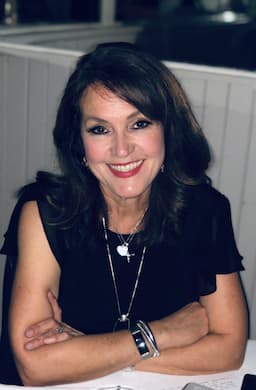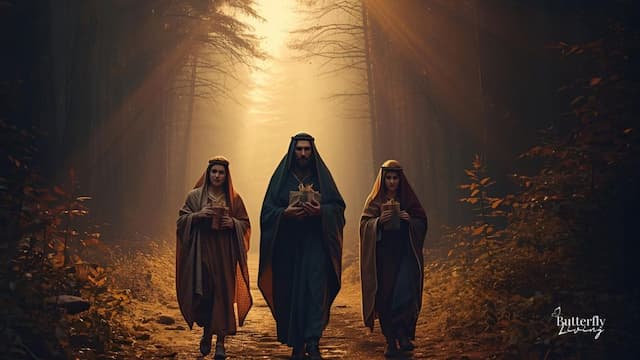The Wilderness: Teeming with Life - Natalie Ogbourne

Thermal Feature: Morning Glory Pool
Not far into a long trudge over a snow-packed boardwalk, our snowcoach-driver-turned-Yellowstone-guide stopped and stooped down. My husband and I, along with six other snowcoach travelers, halted behind him. Surrounded by emerald and sapphire geothermal pools set in the ground at West Thumb Basin, our group huddled together against the cold breeze blowing off Yellowstone Lake, looking intently for some wildlife he’d just pointed out.
The wildlife in question was a fly. It wasn’t your typical housefly, of course. We were in Yellowstone, where little can be described as typical. This fly was an extremophile, an organism that thrives in extreme conditions. To be specific, it was a thermophile, an extremophile that thrives in extreme heat—the kind found around Yellowstone’s geyser basins.
It was February, and the fly was eeking out its precarious existence in the safe zone between the thermal feature and the day’s fifteen-degree air. Too close to the heat of the water, it would die from exposure. Too far from its warmth, it would do the same. To complicate matters, the fly and its kindred had an enemy, spiders who thrived in an adjacent, slightly cooler temperature zone. The spiders were hardy enough to take a quick trip into the fly’s territory, make a catch, and dart back out.
Exposed to the blustery day, I watched the fly moving about his small space and wondered at his perilous life, one I’d heretofore been oblivious to. There was more going on in the wilderness than I’d ever noticed. These flies weren’t new. This was their home.
A little more attention would reveal a lot more life.
Where the Wilderness Unfolds
A friend and I were wrapping up a long-overdue visit. We’d spent a couple of hours catching up over coffee. As we prepared to part, she shared one last thing, a hard thing.
“That’s our wilderness,” she said, alluding to the title of my book.
Our conversation that afternoon had covered kids, husbands, work, and writing. As we hugged goodbye, I realized that the wilderness she mentioned wasn’t separate from her life. It unfolded right in the midst of it.
What’s True on the Trail is True in Life
What we believe about the wilderness wields a weighty influence. In her review of my book, Barbara Harper wrote, “When I think of wilderness, I think of a barren place. But Natalie helped me realize wilderness is wildness: it can be teeming with life.” The wildernesses of our lives are not barren places.
Sometimes, when we’re in the thick of tough times, the type of wilderness my friend was talking about, it can feel like that’s all there is. It becomes the lens through which we view all other things. Often, through it, we see that the most difficult parts of the wilderness mirrored right back at us.
What’s true on the trail (or, more specifically, a snow-covered boardwalk) is true in life: a little more attention reveals a lot more life. In the case of the flies, in order for me to see them, some things had to change. I had to take action. I had to stop, stoop down, and look around.
Perspective, the lens through which we view the components of life, has the power to transform. Perspective does not change our circumstances but it does shape our experience of them. When we see them as barren, we’ll experience them as barren. When we see them as teeming with life, we’ll find life.
We all have a particular point of view. Rarely is our perspective on even a shared experience exactly the same as someone else’s. Sometimes our perspective helps us. Other times it hurts not only us, but also the people around us.
A helpful, healthy, and hopeful perspective doesn’t come naturally. It’s a result of intentional navigation, calling on us to slow down, look around, and consider our posture or our place. We may need to move.
I struggle not only to remember this but also to put it into practice. Maybe you do too. When I do, these words from Madeleine L’Engle help: ”I have a point of view. You have a point of view. God has view.” She means that we each have a particular perspective, a limited one. God has an unlimited view. He knows things we have no way of seeing. Her words remind me to look around, to slow down, and stoop down, stand on my tiptoes, or move in some way. Mostly, they remind me to look up.
A little awareness reveals a lot more life. The question for us is this: Are we paying attention?
1 West Thumb Geyser Basin is unique among geyser basins in that it sits squarely on the shore of Yellowstone Lake. A few of its features are out in the water and can be seen from the boardwalk. Others are under the surface. One feature, Fishing Cone, has an interesting history. In the days before regulations meant to keep the park’s features and visitors safe, some people caught fish and cooked them on the line in its geothermally heated water.
Yellowstone Lake has several underwater thermal features. Regardless, the lake is frozen approximately six months of the year, with an average August temperature of only sixty-one degrees.
2 The full version of this story can be found in Waking Up in the Wilderness: A Yellowstone Journey.






